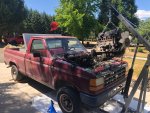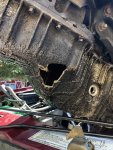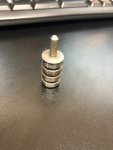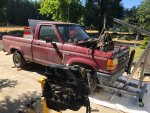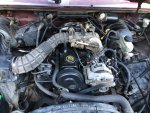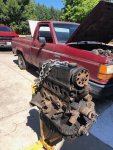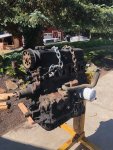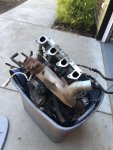- Joined
- Oct 27, 2020
- Messages
- 120
- Reaction score
- 65
- Points
- 28
- Location
- Oahu, Hawaii
- Vehicle Year
- 1991
- Make / Model
- Ford Ranger
- Engine Type
- 4.0 V6
- Transmission
- Manual
- 2WD / 4WD
- 4WD
PROJECT UPDATE:
I arrived in Eugene, OR from Hawaii last Thursday morning. Picked up new motor and prepped truck for swap in afternoon. Pulled old motor on Friday. Installed new motor on Saturday. Tried to start on Sunday but ran into a "no spark" issue. SHOOTS! Packed up and flew out without getting motor started. Oil pan was an exact match. No clearance issues to speak of. The ratchet strap method worked like a charm. I unbolted the rear tranny mounts and driveshaft u-joint bolts to allow tranny to float. Way easy. Check out the HUGE hole in oil pan of old motor. Did not have time to open up pan and determine cause of the hole but a part did drop out during removal (see pic). Any ideas what this is?
I arrived in Eugene, OR from Hawaii last Thursday morning. Picked up new motor and prepped truck for swap in afternoon. Pulled old motor on Friday. Installed new motor on Saturday. Tried to start on Sunday but ran into a "no spark" issue. SHOOTS! Packed up and flew out without getting motor started. Oil pan was an exact match. No clearance issues to speak of. The ratchet strap method worked like a charm. I unbolted the rear tranny mounts and driveshaft u-joint bolts to allow tranny to float. Way easy. Check out the HUGE hole in oil pan of old motor. Did not have time to open up pan and determine cause of the hole but a part did drop out during removal (see pic). Any ideas what this is?
Attachments
-
268 KB Views: 77
-
225.5 KB Views: 86
-
118.5 KB Views: 79
-
178 KB Views: 79
-
233.5 KB Views: 83

